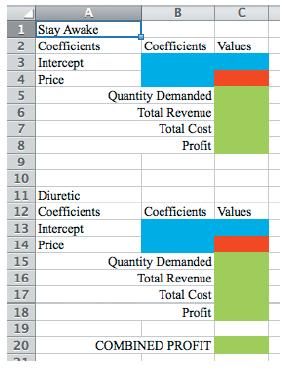10.1 Many pharmaceutical products are used to treat multiple issues. One example of this is diphenhydramine. Formerly...
Question:
10.1 Many pharmaceutical products are used to treat multiple issues. One example of this is diphenhydramine. Formerly sold under patent as Benadryl, diphenhydramine is now an over-the-counter allergy relief medicine available in generic form. One of the side effects of diphenhydramine is drowsiness. More recently, it has been sold as a nighttime sleep aid
(ZzzQuil). Walmart sells two generic versions of diphenhydramine; one is pink, sold as allergy relief medication, and one is blue, sold as a nighttime sleep aid. Walmart sells each version in a bottle of 100 pills with 25 mg of diphenhydramine each. The allergy relief medication sells for $4 per bottle and the nighttime sleep aid sells for $4.98 even though these are chemically identical products.
Suppose you are developing a pricing strategy for a firm in a similar situation to Walmart.
You are selling a generic version of a medication which can be used to help keep someone awake but it also acts as a diuretic. Demand for this medicine from people who need to stay awake is Q = 10000 - 800P while demand for individuals who use the medicine as a diuretic is Q = 7500 - 1000P. The cost to your company of each bottle sold is $1.50;
assume there are no fixed costs.
a. Using the information provided, fill in the template provided. Set up formulas to

calculate quantity demanded, total revenue, total cost, profit from each kind of customer, and combined profit.
b. Using Solver, solve for the profit maximizing price for customers who use this medication to stay awake. Suppose you charge customers who use the medication as a diuretic the same price. How many bottles will you sell to each kind of customer?
What is your combined profit?
c. Using Solver, solve for the profit maximizing price for customers who use this medication as a diuretic. Suppose you charge customers who use the medication to stay awake the same price. How much will you charge per bottle? How many bottles will you sell to each kind of customer? What is your combined profit?
d. Suppose you charged customers differently based on their use of the medication. How much will you charge per bottle to each kind of customer? How many bottles will you sell to each kind of customer? What is your combined profit?
e. Which plan would you pursue if you were making the decision?
f. How would you try to enforce this price discrimination?
Step by Step Answer:







